Difference between revisions of "Modules:IA FEMesh-Documentation-3.4"
| Line 36: | Line 36: | ||
* IA_FEMesh is particularly well suited for quickly developing quality hexahedral meshes for artificial joint research and prothesis design. Its intuitive interface allows the user to mesh and review moderate sized objects, such as bone surfaces, efficiently. However, the use cases are not restricted to this application area. | * IA_FEMesh is particularly well suited for quickly developing quality hexahedral meshes for artificial joint research and prothesis design. Its intuitive interface allows the user to mesh and review moderate sized objects, such as bone surfaces, efficiently. However, the use cases are not restricted to this application area. | ||
| + | * [http://www.na-mic.org/Wiki/index.php/Iowa_Meshing_Tutorial Meshing Module Tutorial] | ||
* [https://mri.radiology.uiowa.edu/downloads/IA-FEMesh_Manual_version1.pdf IA_FEMesh Users Manual] | * [https://mri.radiology.uiowa.edu/downloads/IA-FEMesh_Manual_version1.pdf IA_FEMesh Users Manual] | ||
| − | |||
===Quick Tour of Features and Use=== | ===Quick Tour of Features and Use=== | ||
Revision as of 15:45, 3 February 2009
Home < Modules:IA FEMesh-Documentation-3.4Return to Slicer 3.4 Documentation
Module Name
IA_FEMesh (Finite Element Meshing Module from the University of Iowa)
General Information
A loadable module to automate the creation of surface and volumetric meshes for finite element analysis.
Module Type & Category
Type: Interactive
Category: Meshing
Authors, Collaborators & Contact
- Nicole Grosland, University of Iowa, grosland@engineering.uiowa.edu
- Vince Magnotta, University of Iowa, vincent-magnotta@uiowa.edu
- Kiran Shivanna, University of Iowa, kshivann@engineering.uiowa.edu
- Austin Ramme, University of Iowa
- Steve Pieper, Isomics, pieper@bwh.harvard.edu
- Curtis Lisle, KnowledgeVis, clisle@knowledgevis.com
Module Description
This module allows the creation and editing of surface and volumetric meshes. Polygonal surfaces in VTK or STL format are imported to begin the process. Then a unique and intuitive bounding surface (called Building Blocks) are created interactively by the user and used to guide automated meshing algorithms. The module includes visualization and analysis reports of the quality of mesh elements. Meshes can be written out in Abaqus of VTK format for later processing.
Usage
Examples, Use Cases & Tutorials
- IA_FEMesh is particularly well suited for quickly developing quality hexahedral meshes for artificial joint research and prothesis design. Its intuitive interface allows the user to mesh and review moderate sized objects, such as bone surfaces, efficiently. However, the use cases are not restricted to this application area.
- Meshing Module Tutorial
- IA_FEMesh Users Manual
Quick Tour of Features and Use
The user interface for IA_FEMesh is organized as a set of tabs, with each tab corresponding to a group of related activities. Often the user will move back and forth between the tabs during the meshing process. The tabs organize related operations yet allow free movement, depending on the users needs. The tabs and associated operations are listed below:
- Surface: This tab allows input and saving of surface files used to define the object which will be meshed.
- Building Blocks: After a 3D object surface is input, the user interactively creates, modifies, and views a control surface used to guide meshing algorithms. Under this tab, operations for editing, copying, deleting, and splitting building blocks provide the tools for rapid building block creation.
- Mesh Creation:
- Mesh Quality:
Development
Dependencies
Known bugs
Follow this link to the Slicer3 bug tracker.
Usability issues
Follow this link to the Slicer3 bug tracker. Please select the usability issue category when browsing or contributing.
Source code & documentation
IA_FEMesh was developed as a standalone program and has been integrated for use in Slicer3 as one of the products of a NA-MIC External Collaboration. A design goal for this effort is to allow software development to continue on both the standalone and integrated module versions while working off a common code base.
Customize following links for your module.
Links to documentation generated by doxygen.
More Information
Acknowledgment
Include funding and other support here.
References
Publications related to this module go here. Links to pdfs would be useful.
